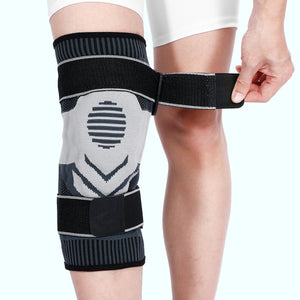Is It Okay to Wear a Double Shoulder Brace All Day

not recommended to use a double shoulder brace for the whole day. This is an intermittent orthotic device, to be used as and when needed, by removing it every 2-3 hours in order to provide the shoulder with to prevent the stiffness of muscles and over-dependence on the brace. Its best use is under the guidance of a doctor for maximum efficiency.
When to Wear
A double shoulder brace is primarily designed to provide and stability to help alleviate shoulder pain and discomfort and support muscle recovery. Generally speaking, a double shoulder brace is best worn in the case of a shoulder injury, strain, inflammation, or after surgery where stabilizing the shoulder is necessary. The doctors or physical therapists advise on the time that should be worn in order to provide support to the shoulder without deviating any negative effects. It is generally recommended to wear when performing high-intensity activities or when holding the shoulder in the same position for long, including but not limited to sports, working for extended hours, and lifting heavy objects.
Wearing a shoulder brace all day is unsuitable for the majority of the people. If used too long, the shoulder muscles lean too much on the support and could eventually weaken the muscles. The time to wear the brace is personal need and circumstance-dependent. Normally, it is suggested that one take off the brace every couple of hours and give your shoulder some room to move, with the purpose of avoiding shoulder joint stiffness. If one experiences increased discomfort or pain while wearing the brace, it is advisable to remove the same immediately and consult a doctor.
Daily Benefits
The general analysis has found that wearing a double shoulder brace daily can be very effective in soothing pain and discomfort of the shoulder—particularly in people with weak shoulders or injuries. This provides a rigid support that keeps the shoulder in its proper position and limits excessive movement, hence minimizing the possibility of further injury, especially in cases where the nature of the condition involves frequent engagement of the shoulder through activities like playing basketball, tennis, or even lifting heavy objects. Second, the pressure on the shoulder is distributed, reducing discomfort in the event of chronic pain or strain of the shoulder.
A shoulder brace will make it easier for people to maintain , which would help reduce the shoulders and neck problems brought about by slouching. Generally, poor posture develops into neck, back, and shoulder pain; however, support from the brace makes people more aware of keeping good posture at all times. This reduces the strain on shoulder muscles and joints. Moreover, the shoulder brace helps improve blood circulation to some degree, promoting the recovery of muscles and tissues. Wearing the brace at appropriate times should help improve comfort in the shoulder and provide better protection during the course of daily activities.

Possible Risks
While a double shoulder brace may provide support and alleviate pain for the short term, long-term use of the double shoulder brace presents some possible risks. There is the risk of weakened shoulder muscles and joints from prolonged reliance on an external support, which could diminish strength and reduce flexibility. In time, over-dependence on the brace results in gradual loss of capability in the muscles of the shoulders to independently support the shoulders, which can further increase the risk of injury later on.
Wearing the brace for extended periods can also affect blood circulation in the shoulder. While supportive, the compressive design of the brace may constrict blood flow, and hence oxygen supply, to tissues in the area, leading to , soreness, or other symptoms. In addition, discomfort on the skin may appear after long use in friction, redness, excessive sweat, which may influence skin infection or allergic reactions.
This would, to an extent, alter the normal range of motion and posture of the shoulder due to perpetual use of the brace. The rigid effect of the brace would tend to limit natural shoulder movement; consequently, some stiffness may arise that could affect daily activities and work. Generally, long-time wearing of a double shoulder brace leads to body dependence on it, and thus, wearing it all day is not advisable when it is not necessary, especially if the shoulder doesn't require support.
Best Fit Tips
Wearing a double shoulder brace requires careful thought in terms of proper fitting. These braces should neither be fitted too tightly nor left too loose. A too-tight fitting brace constricts blood circulation, while one that is too loose does not offer enough support. It is always advisable to take the measurement of the shoulder circumference and width before buying a brace. The selection of breathable and comfortable material for the brace will also contribute a lot when trying to minimize discomfort during prolonged wear, especially when one has to wear it throughout.
Wear the brace so that it is snug up against the shoulder, but does not inhibit a range of motion. If there are shoulder straps or other portions that may be adjusted for comfort, adjust them to an appropriate comfortable position—not too low and not creating undue pressure on the shoulder area. You might adjust wearing time depending on what you do and its intensity—for example, increased time during intensive activities, while you could decrease the time during rest or light activities.
It is also important to incorporate some form of shoulder exercises and stretches appropriately while putting on the brace to avoid stiffness and maintain flexibility. For instance, every few hours, do some and stretch to allow blood flow and prevent discomfort created by its prolonged use. Lastly, cleaning the brace from time to time to uphold hygiene is vital to prevent accumulation of sweat and bacteria that may be harmful to the skin.

Alternatives
If wearing a double shoulder brace all day does not appeal to you, there are other options you can consider. One of them is physical therapy and rehabilitation exercises. These exercises strengthen the muscles in your shoulder and enable you to become much stronger and more stable, eventually relying less on the brace. The most common shoulder exercises include dumbbell shoulder presses, stretches, and bent-over rows, which improve the flexibility and stability of the shoulder while helping to reduce pain and discomfort.
Other options are lighter shoulder straps or , which are more flexible and hence can be used during daily routines. These posture correctors render mild support for the shoulder while not limiting much of the range of movement, as would have been done by a full shoulder brace. For those who sit for long times at desks, posture correctors will also be viable options.
It's also very effective with massage and heat therapy, especially when the shoulder is feeling tight or tired. Heat applications may loosen up the muscles, taking away discomfort. You can have a warm towel applied to the shoulder at night to relax the muscles, allowing for clear blood flow into the area and reducing the need to wear a shoulder brace in the first place. Overall, alternatives reduce the negative impact of all-day brace wearing so that the shoulder can catch its due share of rest and support.
Long-Term Effects
The long-term use of the can have degenerative effects on the muscles and joints at your shoulder. Being a supportive device, it degrades the normal supporting capacity of the shoulder and gradually disempowers the shoulder muscles, hence reducing the stability and flexibility in one's shoulders. This is most likely to occur in the event that other exercises targeting the shoulders are not performed since the brace acts in place of the muscles and, thus, "lazy" shoulders and joints.
A possible long-term effect of using this brace could also be a modification of the normal movement patterns of the shoulder since the stiffness can set in limiting the range of motion. This can predispose him to getting harmed more frequently, even after the brace is taken off, since the structure which makes up the shoulder is no longer capable of producing the strength and flexibility in the shoulder to carry out the function properly. This may increase the chances of injury even after the brace has been removed, since the shoulder will not possess the necessary strength and flexibility required for it to function properly. Constant pressure on the skin can predispose the user to various kinds of skin infections and allergies. It is hence of importance to always ensure that the skin condition is not denoting the signs of redness and inflammation.
While the brace can help in recovery and stability when used appropriately, it is not something on which one could depend in the long run. The brace has to be removed at suitable intervals to let the shoulder move and recover naturally, and one should incorporate exercises to strengthen the muscles of the shoulder and increase flexibility.

Doctor's Advice
Wearing a double shoulder brace for a whole day needs consideration and advice from a medical doctor. The doctors will judge the condition and health of the shoulders based on your specifics in order to let you know whether you really need to wear the brace, and they will recommend the wearing times and ways accordingly. This is especially true for the serious injuries of the shoulder, since professional guidance will help one heal better and not have the brace become a crutch for the shoulder.
Doctors usually prescribe that in the time you wear the brace, you must also do some kind of and physical therapy to enhance the stabilizing and flexibility of the shoulder area. You must consult with your doctor, and you shall modify the wearing plan if any kind of discomfort-like an increase in pain, numbness, and skin problems-are encountered while wearing this brace. Besides this, other complementary alternatives like heat therapy, massage, and posture correctors may be prescribed by doctors to lessen the burden on the shoulder brace.
One shouldn't wear a double shoulder brace all day, at least not without professional guidance. Wearing the brace should be part of the process, rather than an ongoing solution. Protection of one's shoulder and assurance toward long-term shoulder health are best possible when one follows the advice of their doctor, wears the brace properly, and is involved in appropriate exercises for the shoulder.













